Chemistry in Everyday Life Class 12 Notes

Class 12 Chemistry Chapter 16 Chemistry In Everyday Life Notes- Pdf Download
Chapter 16 Chemistry In Everyday Life
This topic in Chapter 15 tells you about the chemistry of everyday life. These notes are one of the best study guides to help students do well on the CBSE Class 12 exam, covering topics such as drug and drug classification, drug-target interactions, therapeutic effects of different drug classes, chemicals and cleaning agents in food. covers.
CBSE CLASS 12th CHEMISTRY 16 NOTES
Points to Remember
Below we have provided some of the important points to remember for NCERT Solutions for Class 12 Chemistry Chapter 16 to ace your exam:
Chemicals play a critical role in enhancing human life quality. Many of the substances we encounter in our daily lives are chemical compounds.
Chemotherapy is the use of chemicals for therapeutic purposes.
Antacids neutralise excess acid in the stomach and raise the pH to an appropriate level.
Antihistamines are medications that are used to treat allergies such as skin rashes.
Tranquillisers, also known as psychotherapeutic drugs, are chemical compounds used to treat stress and mental illnesses.
Antiseptics are chemical compounds that inhibit or even kill the growth of microorganisms.
Artificial sweeteners are chemical compounds added to foods to make them taste sweeter.
Food preservatives are chemicals added to food to keep it from spoiling.
Topics and Sub- topics
In this article, students will find detailed answers to textbook MCQs, Higher Order Thinking Skills (HOTS), worksheets, and exercises. It is loaded as a task in the NCERT notes. These notes are provided step by step. The easiest way to answer this question is to follow the NCERT notes in Year 12 Chemistry Chapter 16. The topics and subtopics of Chemistry in Everyday Life will help students prepare for the CBSE Chemistry 12 exam. It will also help you understand Chapter 16 topics of NCERT Class 12 Chemistry.
Download this solution for FREE Download This PDF
Download Vidyakul App for more videos, PDF's and Free video lectures.

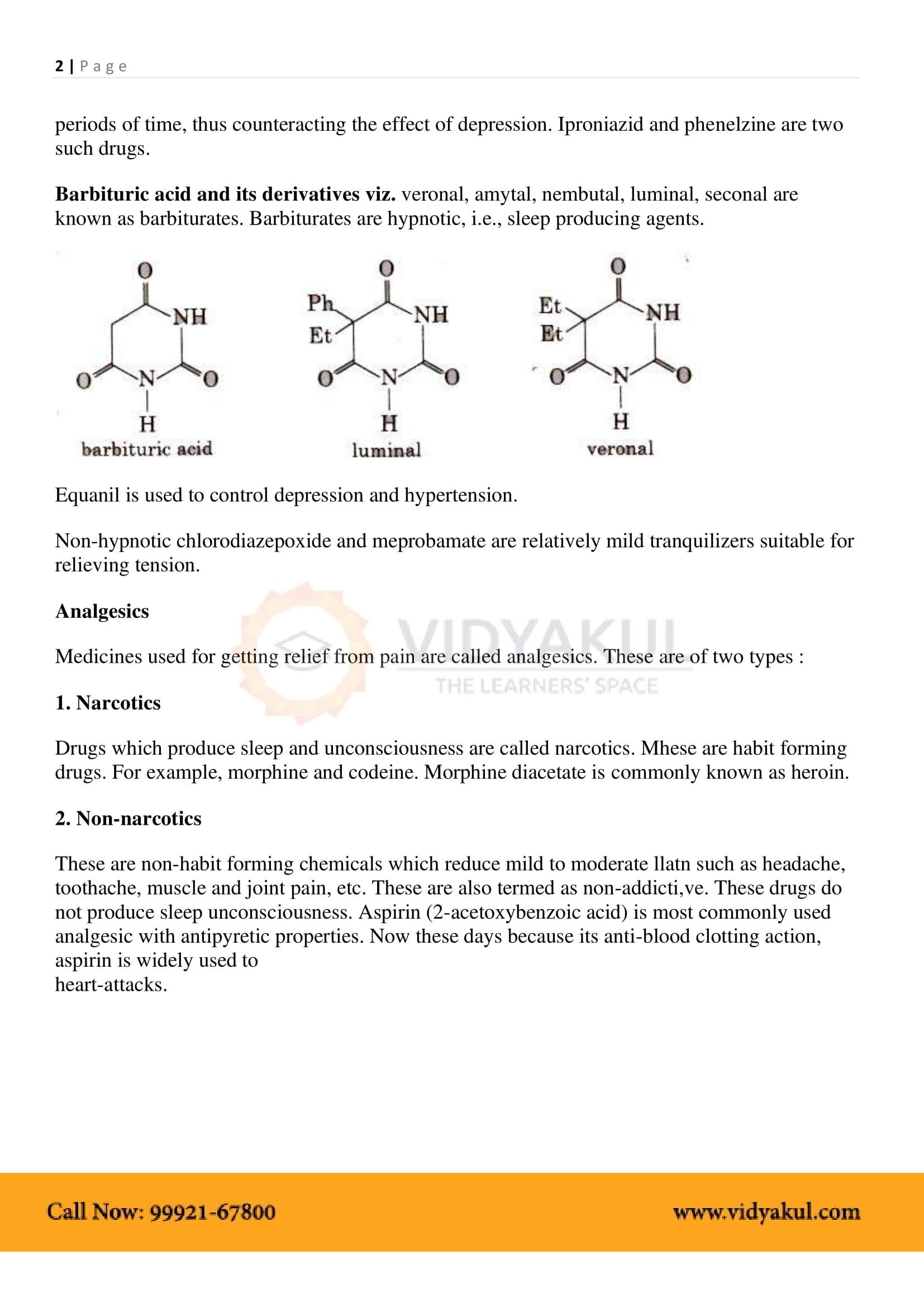
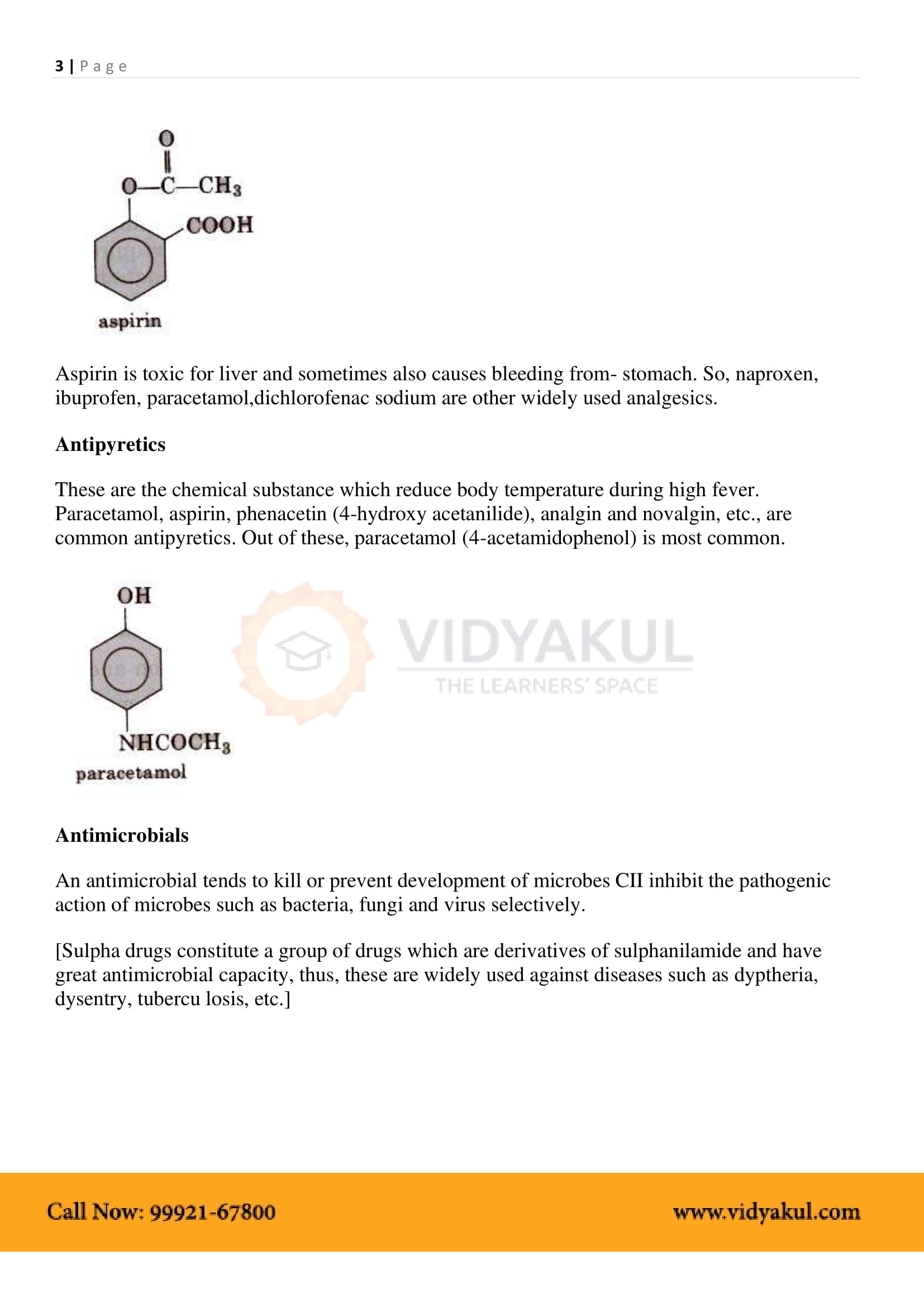
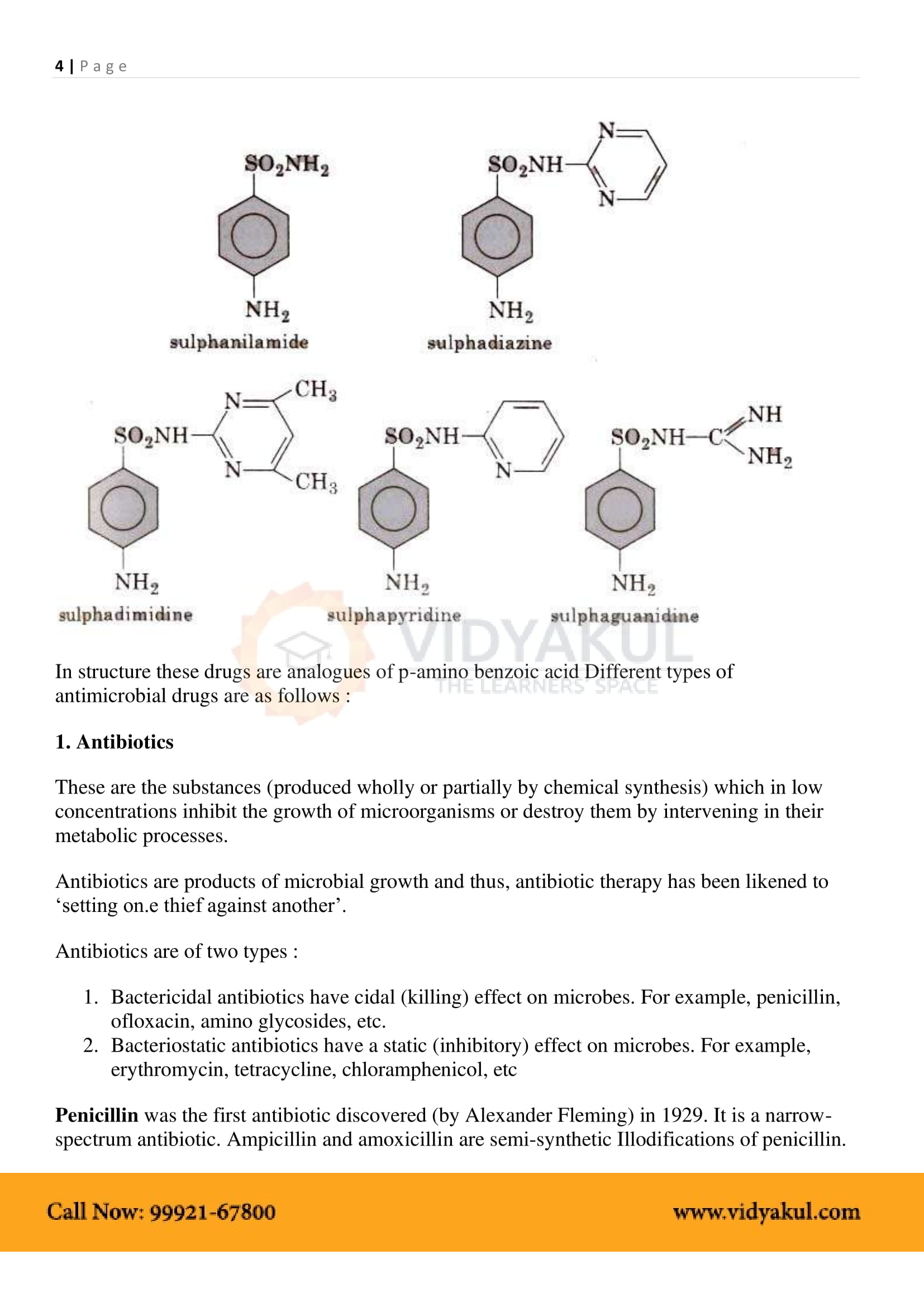
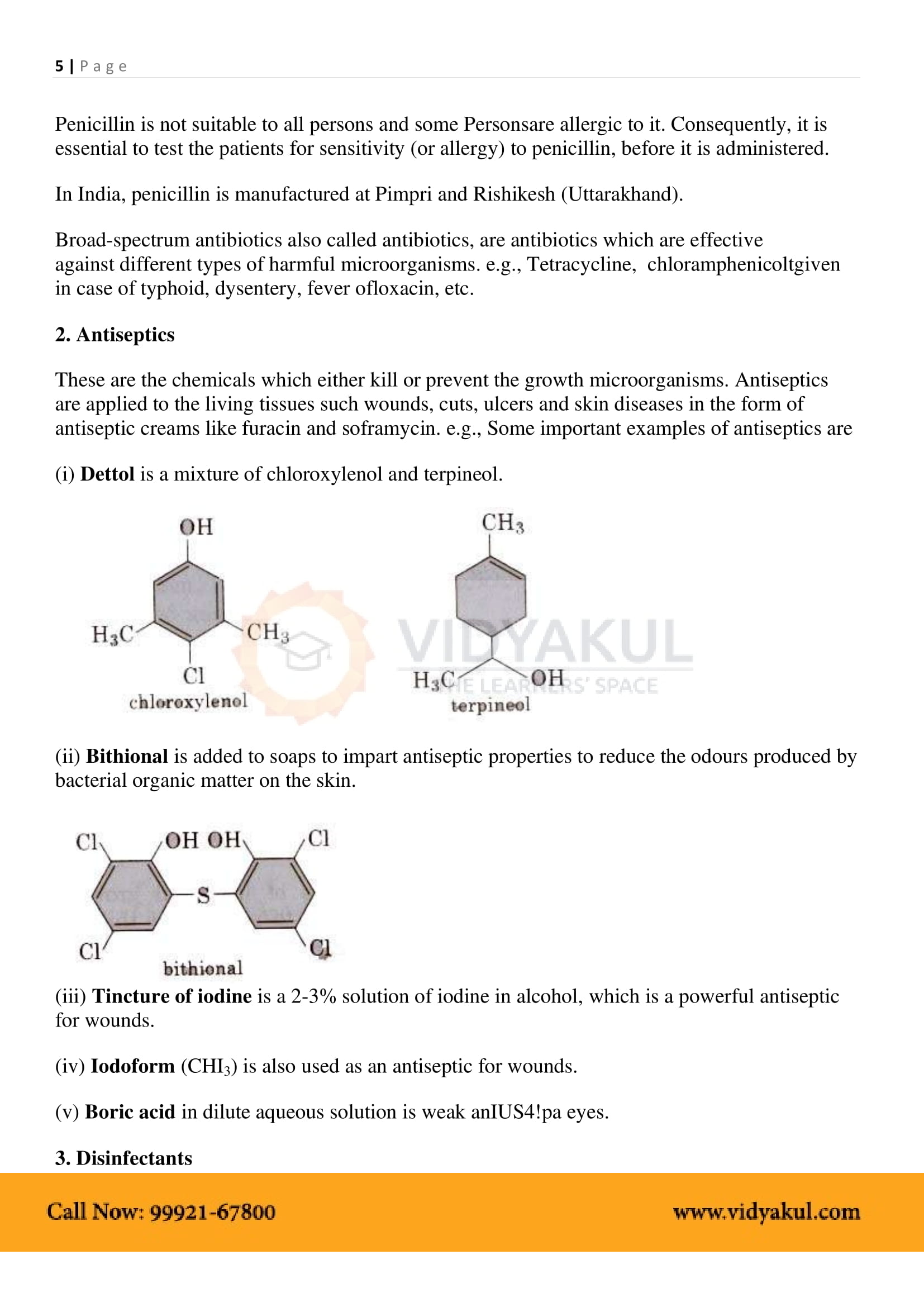
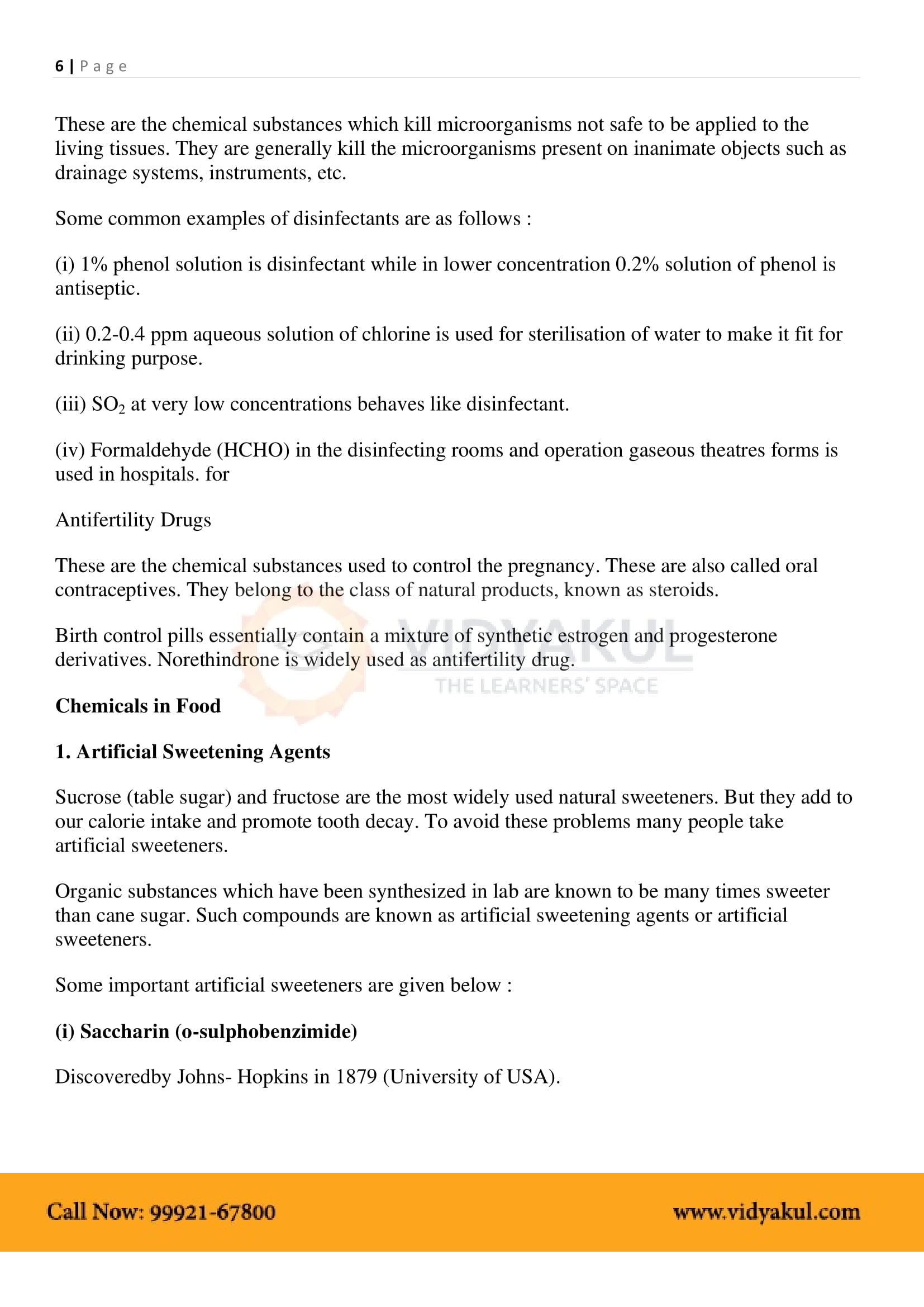
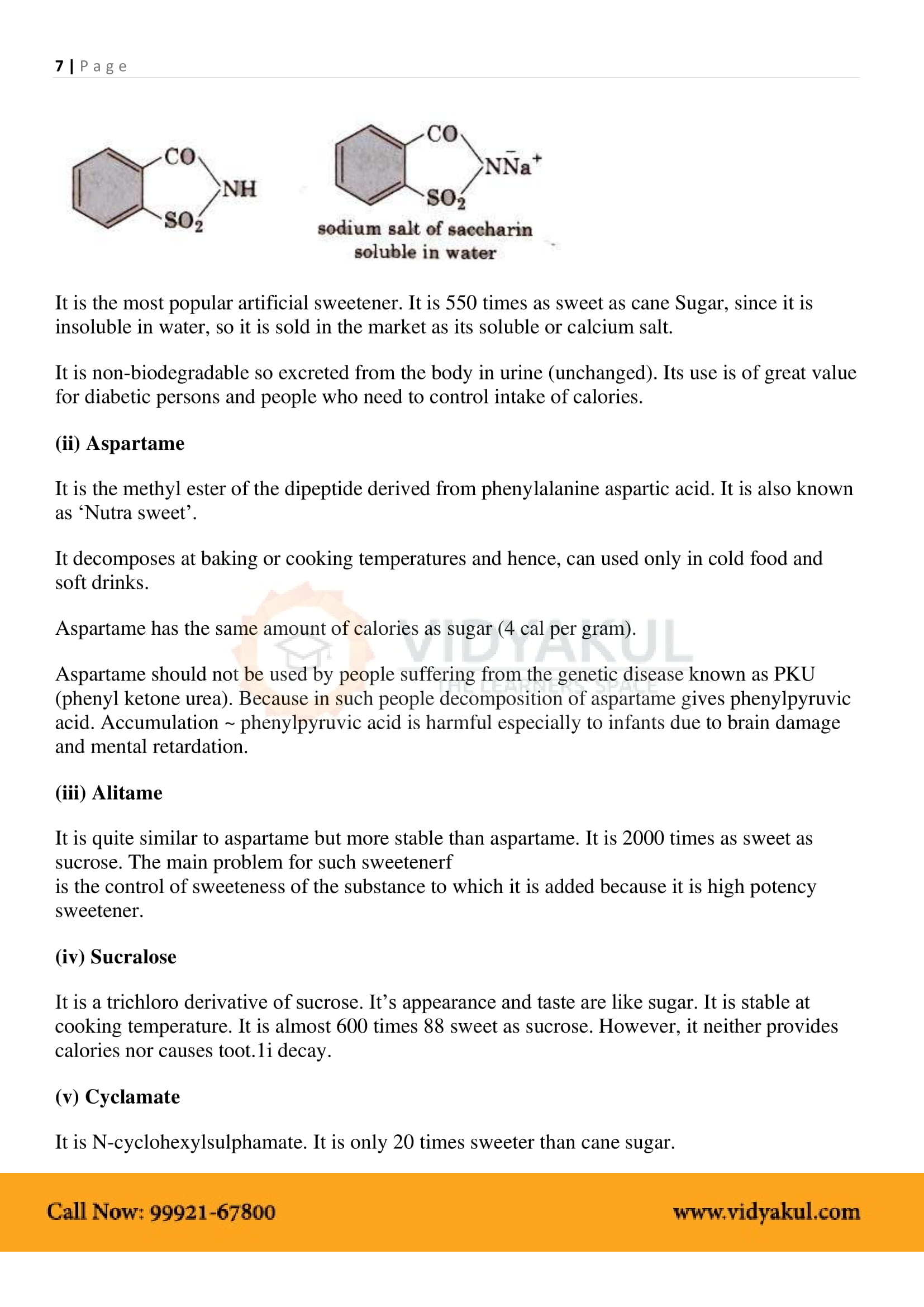
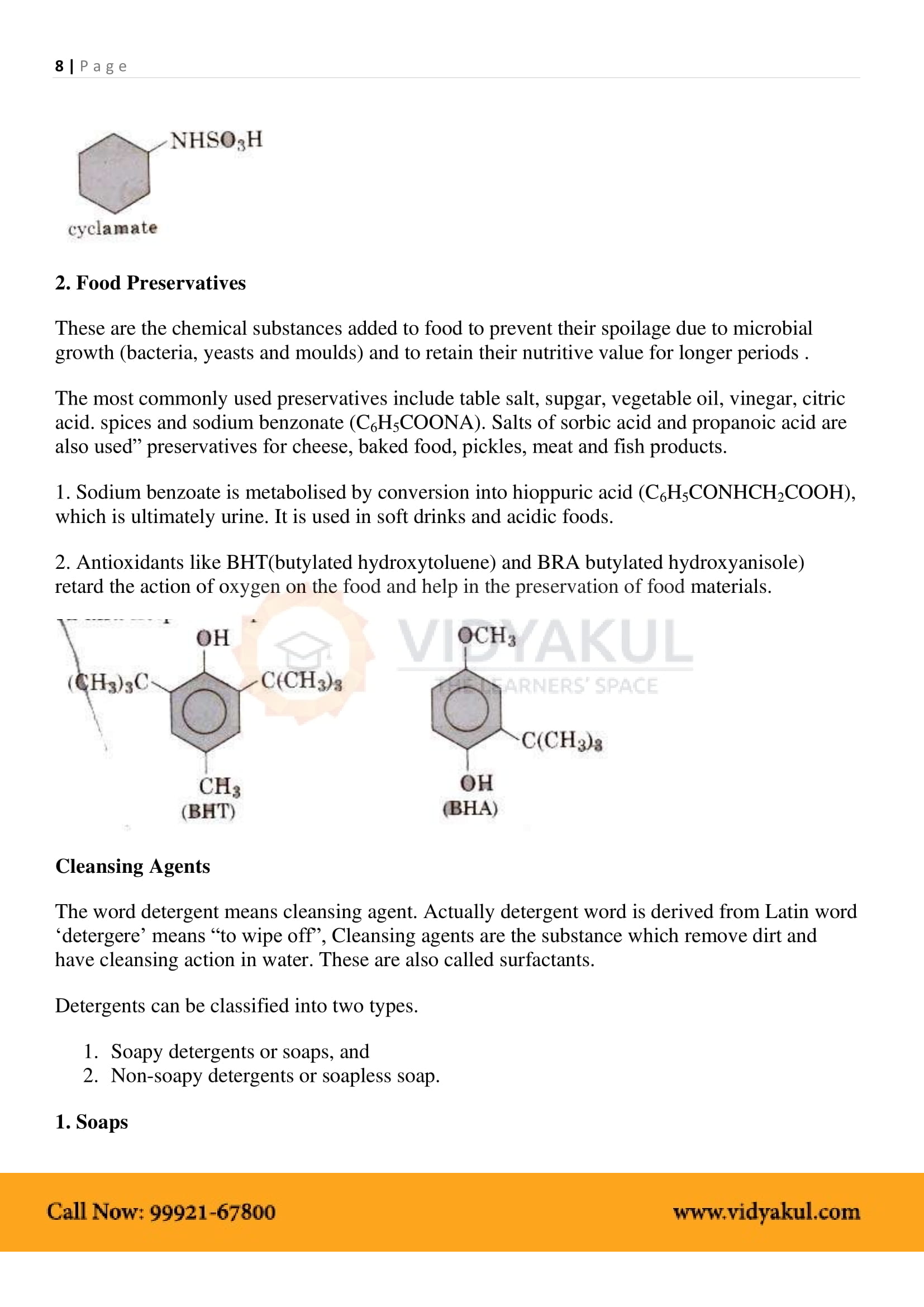
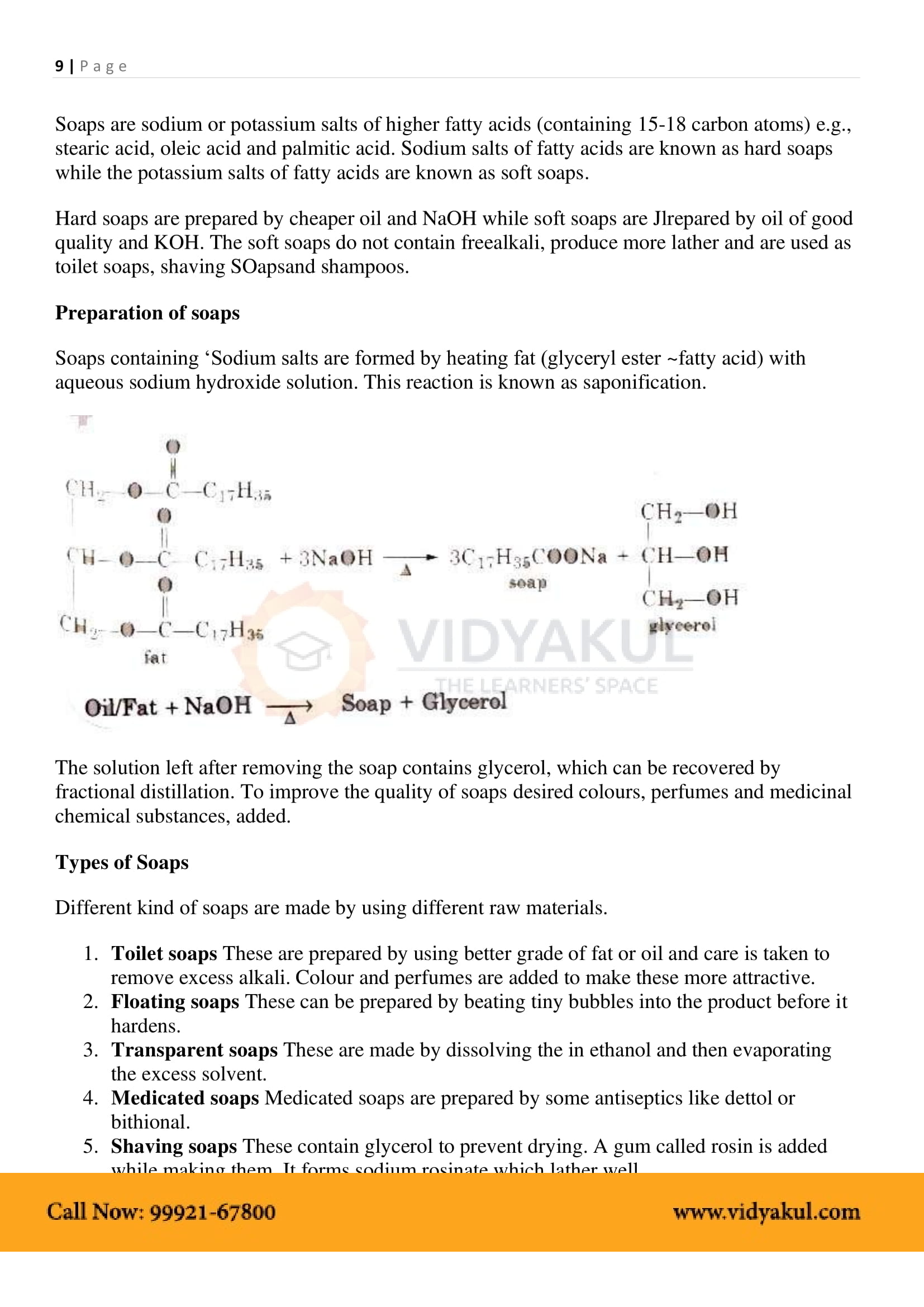
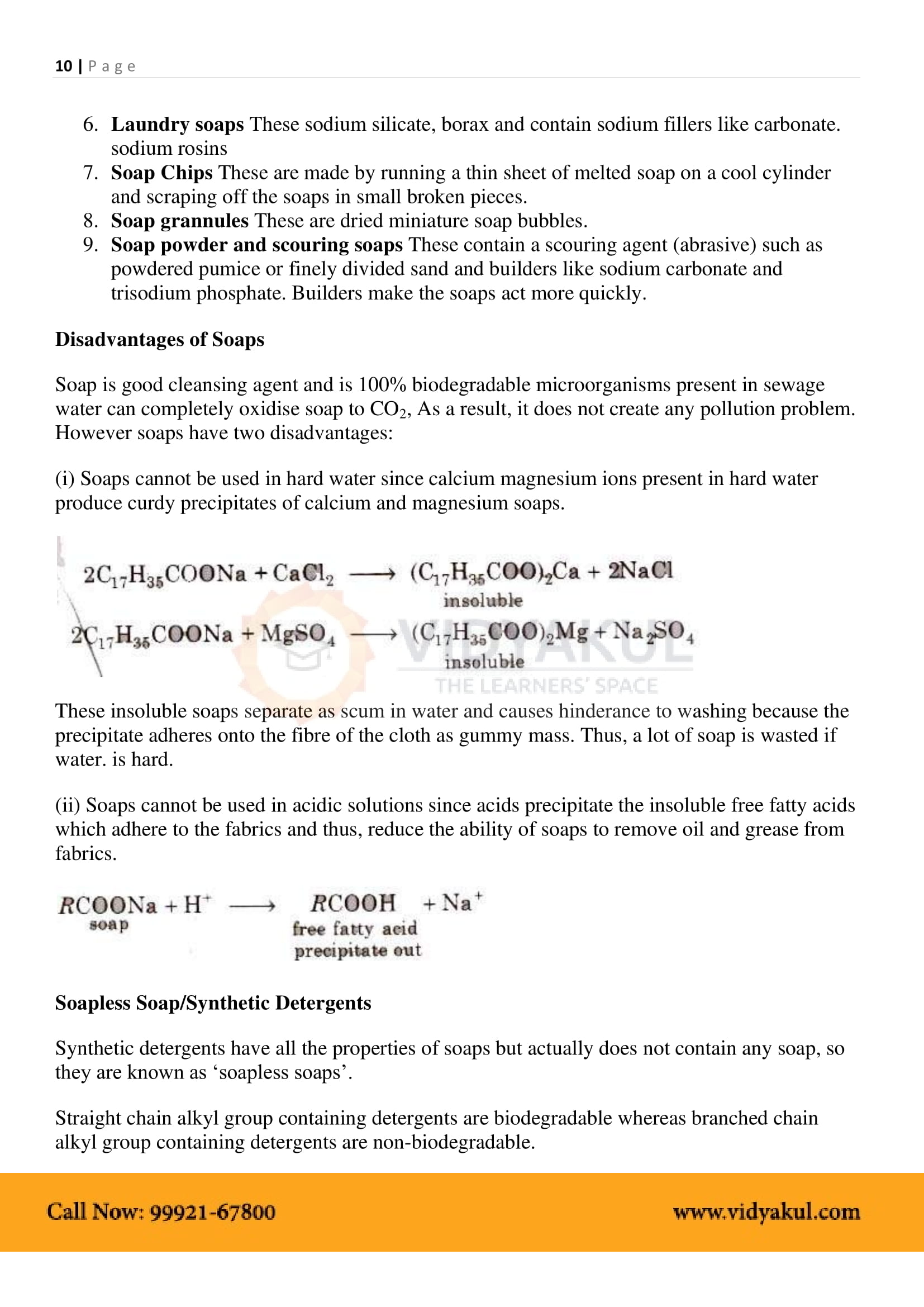
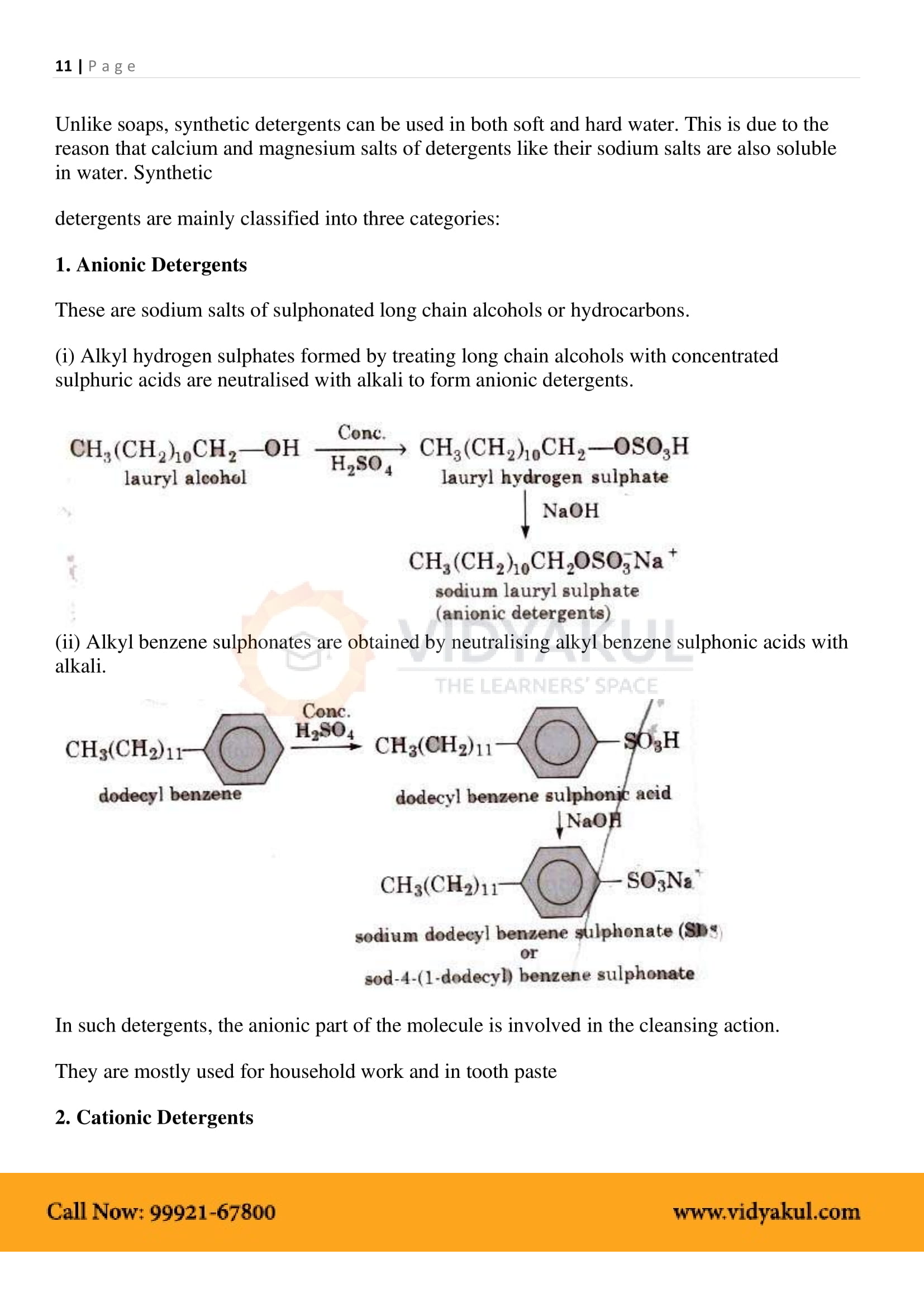
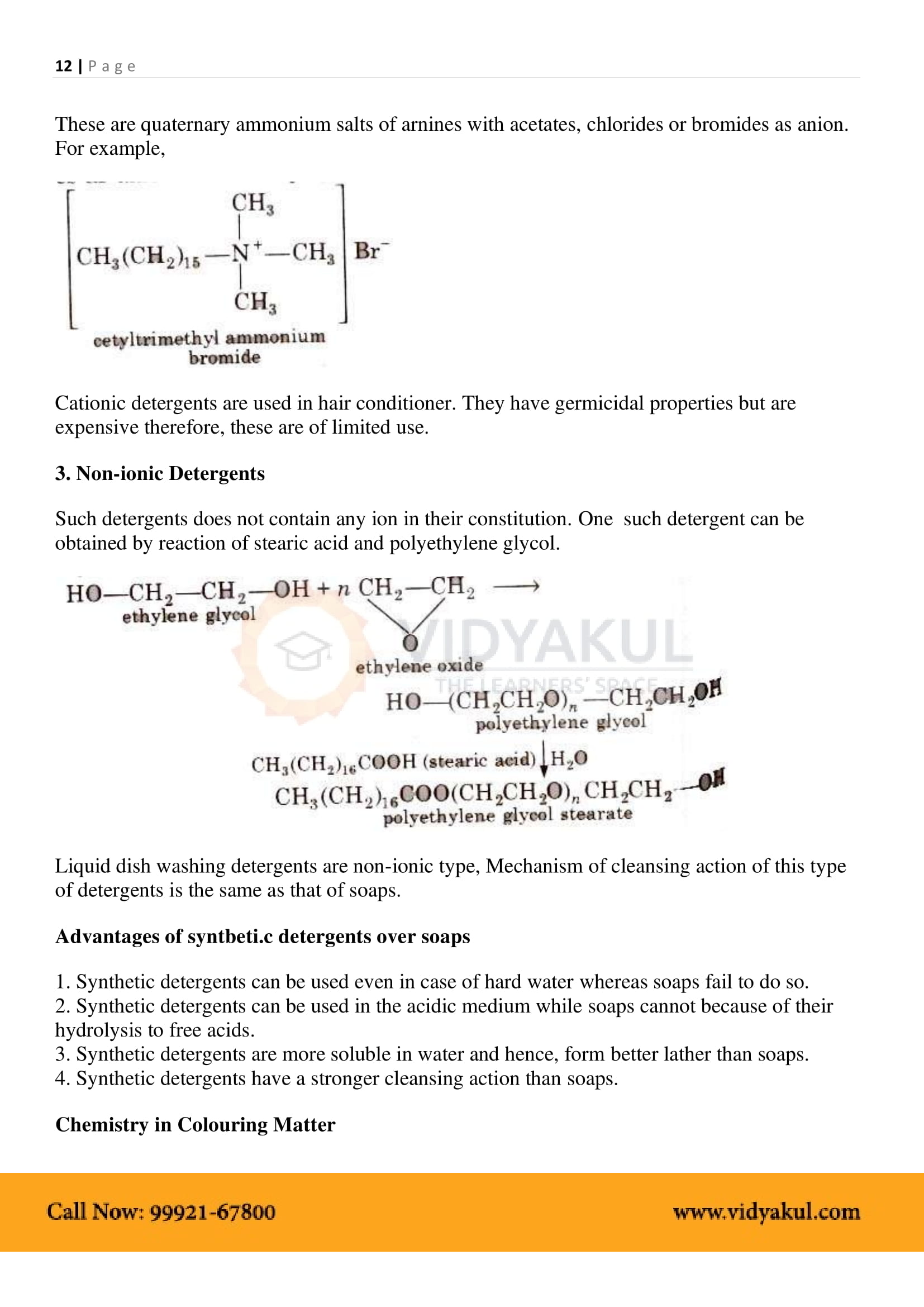

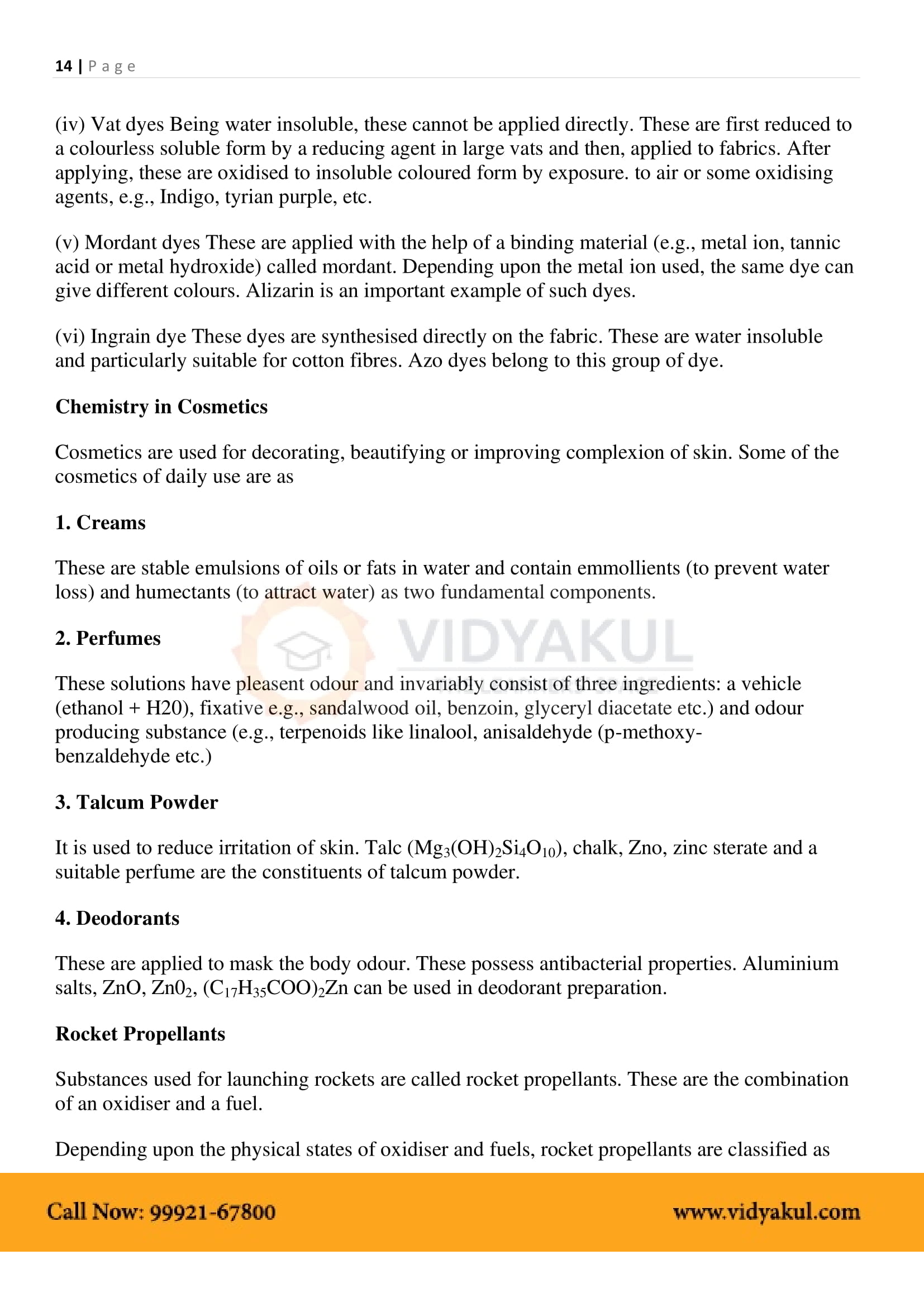
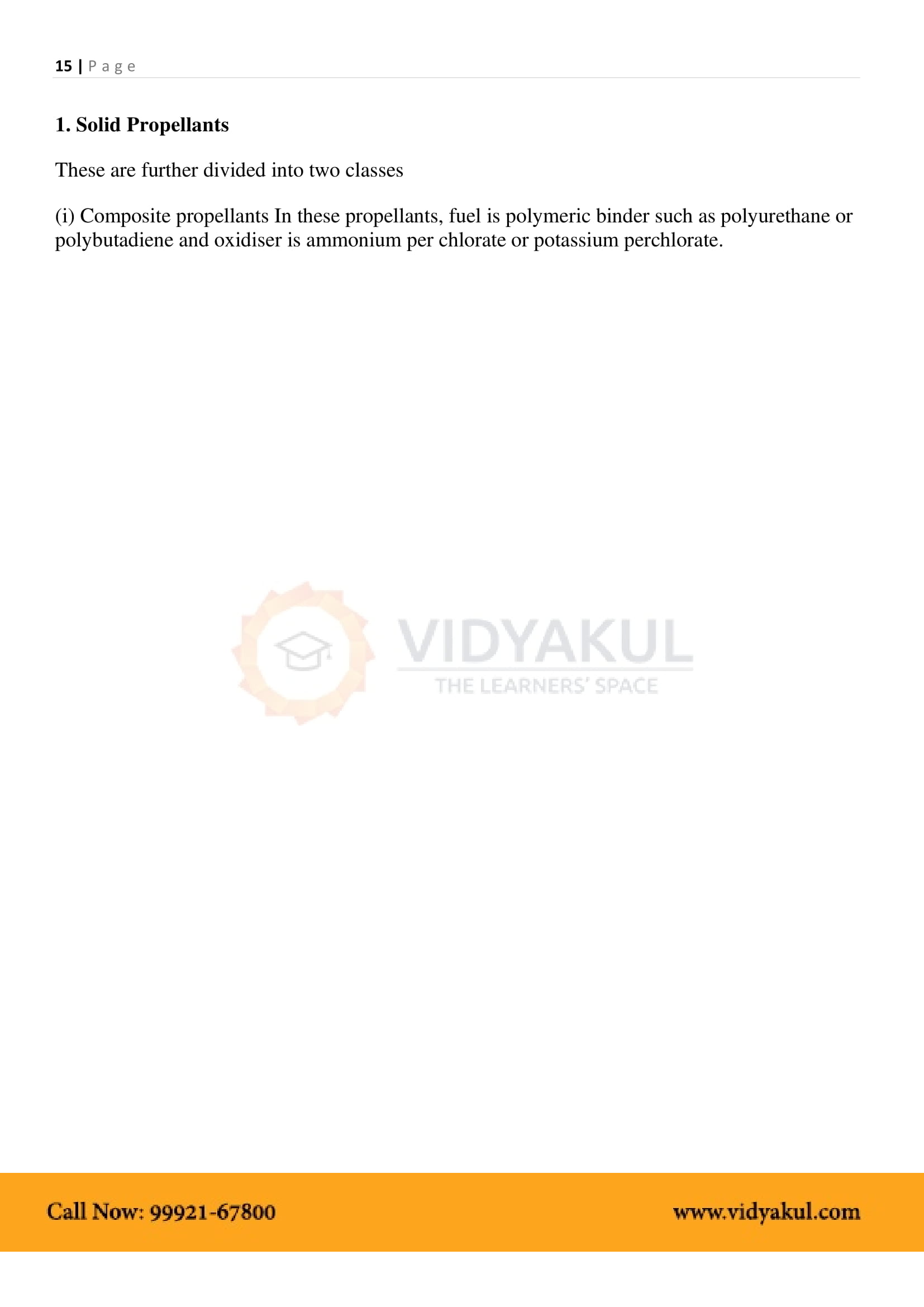
Important Links:
Few Important Questions
What is the ‘Pharmacological effect’?
Pharmacological effects of drugs (i.e. their effects on cells, organs, and systems) are, in principle, simple to measure in animals, and often also in humans.
What are the types of ‘Drugs’?
There are several types of medicinal drugs used widely: 1. Antipyretics: reducing fever (pyrexia/pyrosis)2. Analgesics: reducing pain (painkillers)3.Antimalarial drugs: treating malaria4. Antibiotics: inhibiting germ growth5. Antiseptics: prevention of germ growth near burns, cuts, and wounds
What are ‘Molecular targets’?
Molecular targets are cellular or tissue structures that are intended to be visualized by means of molecular imaging.
Practice Questions
What is chemotherapy?
What is a food preservative? Give an example.
Which substance can be used as a disinfectant as well as an antiseptic?
What is the name of the sweetening agent used to prepare sweets for a diabetic patient?
Explain in detail the cleansing action of soap.
What is a cationic detergent? Explain with an example.
Explain the term broad-spectrum antibiotics.
Name the forces in holding the drugs to the active site on enzymes.



